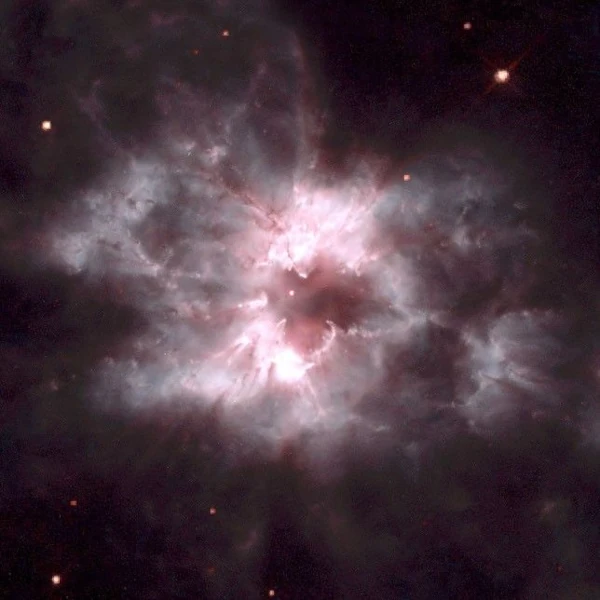
White dwarfs are the compact remnants of low- to intermediate-mass stars (< 8 M☉), after they have exhausted their hydrogen and gone through the giant phases. They no longer produce energy through nuclear fusion and radiate their residual heat. These stars typically have a mass of 0.5 to 1.4 M☉ concentrated in a radius comparable to that of Earth (~0.01 R☉), resulting in extremely high densities.
The internal structure of white dwarfs is very different from that of active stars:
White dwarfs result from the evolution of stars like the Sun:
| Star | Spectral Type | Mass (M☉) | Radius (R☉) | Temperature (K) | Remarks |
|---|---|---|---|---|---|
| Sirius B | DA2 | 1.02 | 0.008 | 25,000 | Companion of Sirius A |
| Procyon B | DQZ | 0.6 | 0.012 | 7,740 | Companion of Procyon A |
| Van Maanen 2 | DZ7 | 0.67 | 0.012 | 6,220 | Isolated white dwarf near the Sun |
| GD 165 | DA | 0.63 | 0.011 | 12,000 | White dwarf with a substellar companion |
| EG 21 | DB | 0.58 | 0.012 | 14,500 | Helium-type star with detected pulsations |
| RE J0317-853 | DAH | 1.35 | 0.007 | 50,000 | Highly magnetized white dwarf |
| 40 Eridani B | DA4 | 0.6 | 0.012 | 16,500 | Companion of the triple system 40 Eridani |
Sources: NASA – Stellar Data, International Astronomical Union.
| Notation Element | Example | Meaning | Physical Details |
|---|---|---|---|
| DA | DA2 | Hydrogen-rich atmosphere | Spectrum dominated by hydrogen Balmer lines |
| DB | DB3 | Helium-rich atmosphere | Helium lines visible, hydrogen absent |
| DQ | DQ7 | Presence of carbon | Carbon lines or molecular bands in the atmosphere |
| DZ | DZ7 | Presence of metals | Signatures of heavy elements in the atmosphere |
Source: International Astronomical Union – White Dwarf Classification